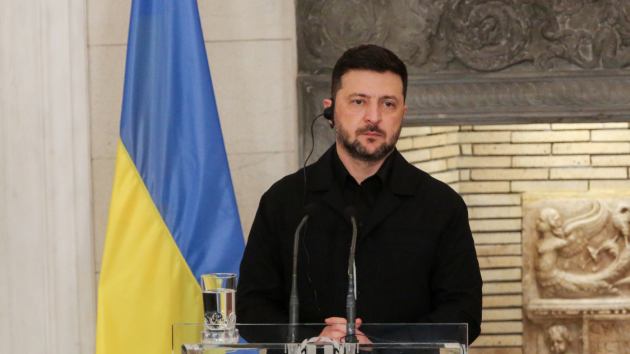Great Lakes ice cover is at historic lows heading into peak ice season
Written by ABC AUDIO ALL RIGHTS RESERVED on February 15, 2024

(DETROIT) — The Great Lakes is seeing record-low levels of ice during a time of year when ice cover is typically closing in on peak levels, according to the latest measurements.
It continues to be the winter that wasn’t in the upper Midwest and Great Lakes regions, where average ice cover has continued to melt away since last week’s Great Lakes ice analysis showed just 5.9% of ice cover.
As of Sunday, just 2.7% of the Great Lakes was covered in ice, the National Oceanic and Atmospheric Administration’s Great Lakes Environmental Research Laboratory announced on Tuesday.
This is the second year in a row where Great Lakes ice cover was well below average for this time of year, which typically sees the peak of ice cover at around 40%, records show. It is also remarkably lower than the previous record low set in mid-February 2023, at 5.77%.
On Sunday, Lake Superior was at 1.7% ice cover; Lake Michigan at 2.6%; Lake Huron at 5.9%; Lake Erie at .05%; and Lake Ontario at 1.7%, according to NOAA. On Monday, the Great Lakes combined average ice cover saw a slight uptick to 2.94% and was at 2.92% as of Tuesday, according to NOAA.
Lakes Erie and Ontario are essentially ice-free, tying their historic-low ice cover records for the day, records show.
Although there are chunks of ice visible from the sandy beaches just north of Muskegon, Michigan, there is “little-to-no” ice cover on Lake Michigan, the NOAA researchers said.
“We have never seen ice levels this low in Mid-February on the lakes since our records began in 1973,” Bryan Mrockza, a physical scientist, for the Great Lakes Environmental Research Laboratory, said in a statement.
The Great Lakes are the largest freshwater ecosystem on Earth, and according to the Fifth National Climate Assessment, they are among the fastest-warming lakes in the world.
This season has been one of the warmest winters on record for the Great Lakes. The current winter season began with very warm air temperatures, resulting in slow ice formation, according to NOAA.
While January saw some periods of intense cold, they were not sustained enough to allow ice coverage to significantly increase.
Maximum ice cover typically peaks in late February and early March, according to NOAA. On average, the Great Lakes experience a basin-wide maximum in annual ice coverage of about 53%.
But ice cover is unlikely to make a significant recovery this season. In the coming last weeks of winter, the overall temperature trend continues to point to above average temperatures and unseasonably mild conditions in the region.
Warmer winters and the associated impacts on ice coverage have links to human-induced climate change when looking at long-term trends. However, for this year specifically, a strong El Niño event is the primary driver with climate change potentially helping amplify the extreme. A typical El Niño winter favors above average temperatures in the region.
Low ice coverage impacts a variety of tourism and recreation industries, such as ice fishing and outdoor sports, that depend on the ice, according to NOAA.
Last month, the John Beargrease Sled Dog marathon, one of the most beloved dog sled competitions in the Midwest, was canceled due to lack of snow.
“Many local businesses in the area rely on ice fishing and outdoor sports which can only happen if the ice is thick and solid,” according to NOAA. “Some fish species also use the ice for protection from predators during spawning season, and there’s increasing evidence that the ice plays a role in regulating many biological processes in the water. Shipping schedules are heavily impacted by the formation of ice, as well.”
ABC News’ Kenton Gewecke and Max Golembo contributed to this report.
Copyright © 2024, ABC Audio. All rights reserved.





